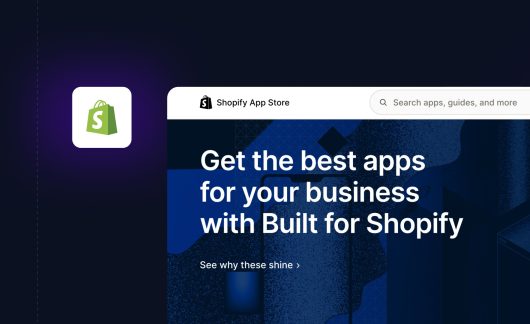In today’s highly competitive business landscape, connecting with your target audience and building brand affinity is crucial for the success of any eCommerce venture. Traditional advertising methods often fall short as consumers increasingly resist blatant sales pitches.
However, the good news is that most people still want to purchase goods and services. So, how can your brand find the right balance to create genuine connections and stand out from your competitors?
The answer lies in showcasing your brand’s authenticity and building consumer trust. One powerful tool is leveraging “User-Generated Content” (UGC). By incorporating content created by your customers, you can tap into the genuine experiences and opinions of real people, which in turn helps to foster trust and authenticity.
This article will explore the benefits and strategies of leveraging user-generated content to boost eCommerce growth. We will delve into the various types of UGC and examine how they can be effectively integrated into your marketing efforts.
What Is User-Generated Content
UGC refers to organic content created by individuals, artists, and creators rather than produced directly by brands or influencers. Brands often share it to promote their products or services because it has an authentic look and feels.
It can include various forms of content such as testimonials, demonstrations, instructions (DIY, recipes, how-to guides), and more.
Below are some post-pandemic UGC trends that can aid you in decision-making for your eCommerce store.

Strategies to Leverage User-Generated Content to Boost Your eCommerce Growth
Here are some effective strategies to employ user-generated content to support your eCommerce store initiatives.
1. Creating a Distinctive Brand
A distinctive identity and voice that connects with your audience are established by developing a brand that distinguishes out from rivals. This looks at more than simply the goods or services you provide and concentrates on the intangible factors significant to your company and your target market.
Take Airbnb as an example. The UGC strategy of Airbnb entails the curation of content that records the distinctive and individualized experiences of visitors while they are there. Airbnb expresses its promise of creating real travel experiences by exhibiting a UGC post showing friends exploring a bustling local market.

The picture above shows the buddies completely engrossed in the culture, surrounded by vibrant shops and throngs of people. The caption describes their experience meeting local business owners and finding hidden gems to foster a sense of neighborhood.
This UGC strategy harnesses the power of storytelling, encouraging potential guests to picture themselves in comparable circumstances and enhancing Airbnb’s branding efforts with genuine and trustworthy content.
2. Focusing on the Voice of the Customer
Encourage your customers to share their experiences using your product or service to implement this user-generated content plan. You can do this through social media platforms, email campaigns, or your website.
Offer incentives or rewards to motivate customers to participate, such as discounts, exclusive offers, or the chance to be featured on your website or social media channels.
Video testimonials, in particular, are highly effective in capturing the attention of your target audience and building trust.
When customers see real people talking about your product or service and sharing their positive experiences, it adds a layer of authenticity that traditional corporate marketing campaigns often lack. Video testimonials allow you to humanize your brand and make it relatable to consumers.
Remember to engage with the customers who provide testimonials and show appreciation for their support. Respond to their comments, thank them for sharing their experiences, and offer assistance.
This not only strengthens the relationship with existing customers but also encourages others to participate in sharing their own experiences.
3. Use Hashtag Campaigns
These campaigns encourage customers to share content featuring your brand, creating a buzz and driving brand promotion. To incorporate a hashtag campaign into your eCommerce growth strategy, follow these steps:
- Create a theme that resonates with your target audience and aligns with your brand values to generate excitement and community engagement.
- Leverage social media platforms like Instagram to encourage customers to share brand-related content using the campaign hashtag, amplifying brand reach.
- Incentivize participation by running contests with prizes like free merchandise or exclusive services, motivating customers to engage actively.
- Showcase user-generated content on your brand’s platforms, validating and recognizing customers’ contributions to build trust and loyalty.
- Repurpose UGC for marketing efforts, featuring it on your website, social media channels, or email campaigns to provide social proof and influence purchase decisions.
- Track engagement metrics, such as user-generated posts, likes, shares, and reach, and analyze the impact on eCommerce growth, refining and optimizing future campaigns.
You get to turn existing consumers into brand ambassadors, raise brand recognition and draw in new clients by incorporating hashtag campaigns into your eCommerce growth strategy. Below is an example of a Hashtag campaign.

4. Quality Images
Product images play a crucial role in eCommerce growth, as they visually represent the products you’re selling. High-quality images that accurately depict the product are essential for building customer trust and helping them make informed purchasing decisions.
UGC can come in photos or videos created by customers, influencers, or bloggers who have used your products. By showcasing UGC alongside your product images, you can offer a more comprehensive view of the product in real-life scenarios.
When incorporating UGC into your product images, ensuring the content aligns with your brand’s image and quality standards is important. Always seek permission from the content creators before using their images to comply with copyright and intellectual property regulations.
Striking the right balance between professional images and UGC help create a visually appealing and informative shopping experience for your customers.
5. Building an Online Community
Building an online community through a membership site can be a powerful strategy to engage with customers, foster brand loyalty, and generate user-generated content. To create an effective online community, you can follow these steps:
- Choose a Platform: Select a suitable platform for hosting your membership sites, such as WordPress with membership plugins, dedicated membership platforms like MemberPress or Kajabi, or social media groups.
- Set Up Discussion Areas: Create different sections within your membership site where customers can engage with each other, such as forums, chat rooms, or comment sections. Encourage users to share ideas, ask questions, and discuss their experiences related to your brand.
- Enable User-Generated Content: Encourage customers to submit testimonials, images, videos, or reviews of your products or services. Feature this user-generated content on your website, social media platforms, or within the community to promote your brand and empower customers as advocates.
- Organize Live Events: Host live events or webinars where customers can participate and co-present with your team. This interactive approach builds community and allows direct engagement between customers and your brand representatives.
- Provide FAQ Section: Create a dedicated section where customers can post frequently asked questions and receive answers from your team and other community members. This helps address common concerns and provides a valuable resource for users.
- Foster Collaboration: Encourage community members to help each other by offering advice, sharing tips, and providing solutions. This collaboration builds a supportive environment and reduces the burden on your customer support team.
- Recognize and Reward Engagement: Acknowledge and reward active community members for their contributions. Offer badges, exclusive perks, or feature their content prominently on your website or social media channels. Recognizing their participation encourages further engagement.
- Moderation and Guidelines: Establish clear guidelines for community behavior and appoint moderators to ensure a positive and respectful environment. Moderators can help manage discussions, answer questions, and address any issues or conflicts that may arise.
- Regularly Engage and Participate: Actively participate in community discussions, respond to customer posts, and provide valuable insights into the brand. This shows your commitment and helps establish a stronger connection with your customers.
- Promote Your Community: Spread the word about your membership site and online community through your website, social media channels, email newsletters, and other marketing channels. Encourage existing customers to join and invite friends or colleagues who might be interested.
Building an online community requires time and effort, but the benefits of increased engagement, user-generated content, and customer loyalty make it worthwhile.
Advantages of Using User-Generated Content for eCommerce Growth
Let us delve into the numerous benefits of user-generated content and explore why it has become a game-changer for eCommerce businesses.
1. Sales Impact
User-generated content (UGC) acts as social proof, positively influencing purchasing decisions when users share their positive experiences with your products or services. UGC showcases product benefits and features authentically and relatable, driving more sales.
2. Brand Awareness Boost
UGC significantly enhances brand awareness by leveraging users who create and share content about your brand. It increases your online presence by tagging, mentioning, and sharing content on social media, which reaches more potential clients.
3. Authenticity and Credibility
It provides genuine content that resonates with your audience. Real experiences and customer opinions add credibility to your brand, fostering trust and establishing an honest brand image.
4. Community Engagement
Encouraging users to share their content and experiences creates a space where like-minded individuals can connect, discuss, and bond over shared interests and brand loyalty.
5. Valuable Customer Insights
UGC serves as a valuable source of customer research and insights. Analyzing the content and sentiments shared by your audience helps you understand their preferences, needs, and pain points. This information guides marketing strategies, product development, and business decisions.
6. Trust Building
Positive experiences shared by users and their recommendations instill confidence in potential customers. Trust is a critical factor in purchasing decisions, and UGC helps establish a favorable perception of your brand.
7. Audience Understanding
User-generated content provides valuable insights into your audience’s behavior, interests, and preferences. By monitoring and analyzing the content they create and engage with, you better understand your customers, their values, and their perception of your brand.
8. Diverse Content Strategy
Instead of relying solely on brand-generated content, incorporating UGC brings different perspectives, experiences, and creative ideas. This variety keeps your content fresh, engaging, and appealing to a wider audience.
9. Collaboration Opportunities
It encourages collaboration between your brand and customers. By actively involving users in content creation, you build stronger relationships and foster a sense of co-creation. This collaboration can lead to innovative ideas, increased loyalty, and a sense of ownership among your customers.
10. Time and Cost Efficiency
Allowing users to contribute and create content on your behalf reduces the burden on your marketing team and ensures a consistent stream of content. Additionally, UGC is a cost-effective strategy as it eliminates the need for expensive professional content production.
11. Increased Brand Loyalty
When customers actively participate in creating and sharing content about your brand, they develop a deeper connection and emotional attachment. This loyalty leads to repeat purchases, advocacy, and an increased lifetime value of customers.
12. Engagement
UGC encourages active participation from your audience, sparking conversations and fostering engagement. Users creating and sharing content related to your brand or products create a sense of involvement and connection, increasing engagement.
Way of Creating User-Generated Content
These forms of user-generated content allow individuals to contribute their unique perspectives, insights, and experiences.
They often provide valuable information to others seeking recommendations, advice, or detailed knowledge about a particular subject. User-generated content is produced by individuals in a variety of ways. For example:
1. Reviews and ratings
User-generated content like reviews and ratings is extremely important in influencing consumer behavior. Users offer important insights into the caliber, effectiveness, and general satisfaction of a product or service by sharing their experiences and thoughts.
Potential customers may be influenced by these user reviews, which will aid them in choosing the finest product for their requirements and informing their selections. Additionally, ratings give people a quick visual depiction of user sentiment that they might use to assess an item’s popularity or perceived value.
2. Social Media Content
Social media platforms provide users with a dynamic space to generate content. They can share experiences, thoughts, photos, and videos on various topics like product reviews, unboxing videos, recommendations, and personal stories.
Users express genuine opinions, influencing others’ perceptions. Visual content like photos and videos adds an immersive touch to their narratives.
Social media also allows the creation of unboxing videos, providing firsthand impressions. Personal stories shared on these platforms foster a sense of community and connection.
3. Forum Discussions
Online forums and community sites facilitate discussions among users on specific topics. Users ask questions, share insights, provide solutions, and engage in conversations with one another. Platforms like Quora and Reddit host a wide range of user-generated content in the form of questions, answers, and discussions.

4. Blogs
Individuals use blogs to express their opinions, share knowledge, and provide detailed information on various subjects. These blog posts often offer a more in-depth and personal perspective than other types of user-generated content. Bloggers can cover various topics, including product reviews, tutorials, personal experiences, and more.
5. Video Sharing Platform
Video-sharing platforms like YouTube, Vimeo, and TikTok empower users to create and share their videos. These platforms offer diverse content possibilities, including product reviews, tutorials, vlogs, comedy sketches, and more.
Users can leverage their creativity and expertise to produce engaging and informative videos. These platforms provide a global stage for individuals to showcase their skills, talents, and unique perspectives, fostering a vibrant community of content creators and consumers.
6. Podcasts
Podcasting is a popular medium for creating audio content on diverse subjects. Users produce podcasts covering product reviews, expert interviews, personal stories, education, and engaging discussions.
Platforms like Apple, Spotify, and Google Podcasts allow convenient subscriptions and access to podcasts on smartphones, tablets, and computers. Brands benefit from podcasts by connecting with audiences through valuable content and insights and establishing thought leadership.
Listeners enjoy informative, entertaining, and educational content, staying updated while multitasking. Podcasts offer a visually unobtrusive way to consume content, fitting into daily activities like commuting, exercising, or relaxing.
7. Online Marketplaces
Online marketplaces like eBay, Etsy, and Airbnb rely on user-generated content. Users create detailed listings with descriptions, images, and pricing to showcase products, services, or accommodations.
Platforms leverage this content to enable informed purchasing decisions. Handmade items on Etsy benefit from high-quality images and descriptions. Airbnb listings provide photos, amenities, and descriptions for travelers. User-generated feedback and reviews enhance transparency, trust, and decision-making for buyers, renters, or guests.
Conclusion
User-generated content (UGC) is a powerful tool for eCommerce growth, fostering authenticity and building consumer trust. UGC includes various forms of content such as testimonials, demonstrations, instructions, and more.
By leveraging UGC, brands can boost engagement, create a distinctive identity, and focus on the voice of the customer. Hashtag campaigns incentivize participation and promote brand awareness.
Incorporating high-quality images from customers alongside product images enhances trust. Building an online community through a membership site encourages engagement and generates UGC.
The advantages of UGC include increased sales, brand awareness, authenticity, community engagement, valuable customer insights, trust building, audience understanding, diverse content strategy, collaboration opportunities, time and cost efficiency, and increased brand loyalty.
User-generated content can be created through reviews and ratings, social media content, forum discussions, blogs, video-sharing platforms, podcasts, and online marketplaces. Leveraging UGC effectively can drive eCommerce growth and connect with the target audience genuinely and positively.
Acowebs are the developers of the WooCommerce Deposits– Partial Payments plugin that helps the customers pay a fixed price, percentage, partial payment, or deposits, for the products purchased from your Woocommerce store. It also has developed various other plugins like WooCommerce Currency Switcher, the multi-currency converter plugin that shows prices in the user’s local currency and helps customers connect to desired products faster. It helps customers quickly compare products and make a judgment easily.












 Login
Login
 Cart
Cart







